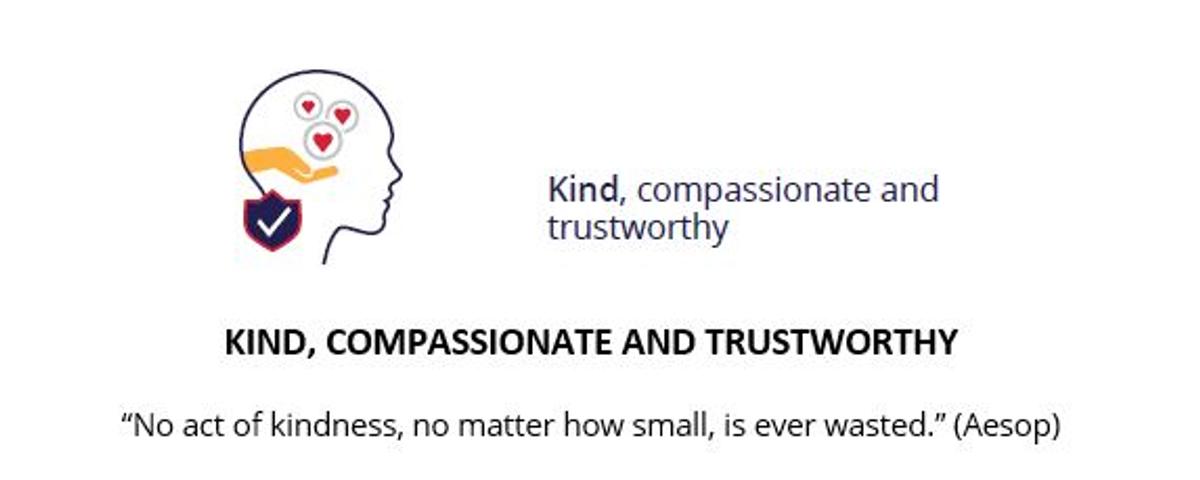Learning and Teaching
at MFG

Learning and Teaching
at MFG
MFG Traits: Overview example 3
This year one of our goals as a group of teachers is to develop an overview that describes each of our 11 MFG traits. Each of our teachers, as part of their Performance and Development Plans, is incorporating one or more of our traits into their teaching and their curriculum design this year.
Below is another example of an overview of one of the traits.


What is this trait and what does it look like in action?
What is it to be kind?
To be kind is to have a disposition where you consider other people’s feelings and are generous and helpful towards others.
Actions of a kind person
We act with kindness when we can
• We understand that people may think/look/behave differently, but they still need and are entitled to our care and respect
• We proactively create conversations/social situations which make other people feel valued
• We protect others from embarrassment or hurt where possible
• We perform actions with a generous intent
What is it to be compassionate?
To be compassionate is to see something from another person’s perspective and to endeavour to help them. It may involve an emotional response (empathy) when there is some perceived suffering, but compassion is mostly defined by wanting to help.
Actions of a compassionate person
• Showing a willingness to help others
• Helping without the expectation of any return
• Noticing others and what is happening for them
• Not judging people by their actions but truly trying to understand them
What is it to be trustworthy?
To be trustworthy is to be able to be relied upon to do what you say you are going to do and to consistently demonstrate in your actions and attitudes that you are dependable and honest.
Actions of a trustworthy person
• Being reliable and consistent
• Having the courage to do the right thing
• Being honest even when this means you may get into trouble
• Not deceiving, cheating or stealing
• Maintaining confidentiality
• Being loyal and faithful
Strategies we use to model these traits
We model the traits of kindness and compassion by:
• Nurturing relationships with people by being truly present with them - not on our phones or thinking about other things
• Thinking the best of people, rather than the worst
• Treating everyone as we would like to be treated, not just our friends
• Noticing and responding to the needs of those less fortunate than us
• Saying encouraging words to others
• Thanking people for their kindness towards us and others
• Practicing acts of kindness (letting others go first, holding a door, paying for something …)
We model the trait of trustworthiness by:
• Keeping our promises and meeting our commitments
• Being honest even if it means that we will get into trouble or people may be disappointed/angry with us
• Standing by our friends and keep their confidences (unless they are going to hurt themselves and make a wrong choice)
• Not deceiving, cheating or stealing
Strategies and Techniques that our teachers use to develop this trait include: